Hello everybody, and welcome back to another article of Brawl Haul! I am very happy with the attention the first article got, so here is hoping this one does as well. Without further ado, let us dive into this week’s brew!

Overview
The game plan of this deck is fairly straightforward, establish a board, pressure the opponent through the early and midgame, then close out the game with one of the several win conditions or by draining the opponent out with Klothys, God of Destiny, all while keeping the opponent’s graveyard manageable.
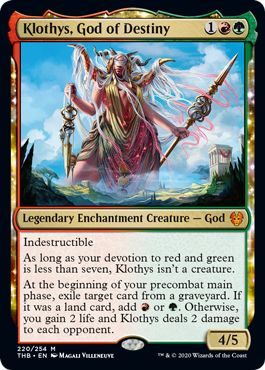
Why Klothys, God of Destiny?
Out of all the Gods released in Theros, Beyond Death, Klothys was probably the one I had the lowest hopes of working well in Brawl, mainly because she just doesn’t seem to do much at first. She’s graveyard hate with either ramp or a small amount of drain as an upside, which seemed like it just would not do much.
However, once I got around to playtesting with her, she instantly felt a lot stronger than I originally thought she would be. Being able to ramp and drain the opponent once is not very impactful on its own, but due to the nature of the God, this adds up, being able to put a lot of pressure onto the opponent. Combine this with the fact she is very hard to deal with being an indestructible creature, it becomes a clock that is difficult to slow down. Unsurprisingly, she hoses any form of graveyard strategies to the point where it is essentially a free win and despite requiring 7 devotion to red and green, she is surprisingly easy to turn into a creature.
This is not without her downsides though. There are a variety of effects in standard right now that lets one steal a permanent, and just in how she is tough for our opponents to deal with, she is even harder for us to deal with her given the deck being Gruul colors. While her drain effect is strong enough for most decks, those with life gain are able to gain more than she is able to drain. Finally, due to the deck being red-green, when the deck runs out of steam, it is hard to get back onto the board, which is less an issue with Klothys and more an issue with the color pairing itself.
Fueling the Graveyard
As useful as it is to constantly shut down the opponent’s graveyards, it is a bad idea to rely on the opponent’s deck to make ours good and because of that, we need to have some way of fueling the graveyard. While a large chunk of the deck can easily put cards in the graveyard, the best ones are Elvish Reclaimer, Cavalier of Thorns, Cavalier of Flame, and Neheb, Dreadhorde Champion.
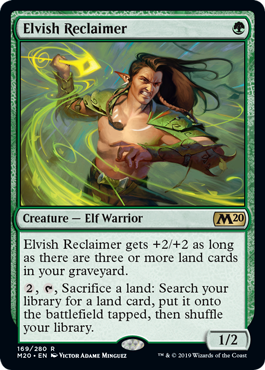
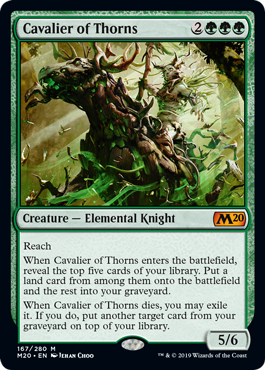
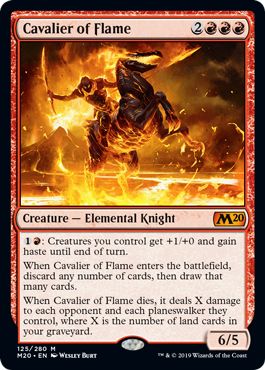
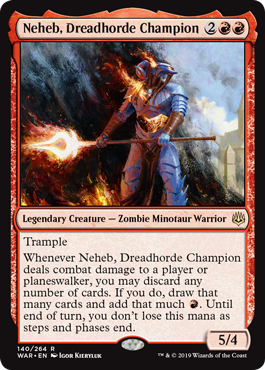
What makes these cards strong is that not only do they put cards into the graveyard fairly easily, but they all provide some additional threat in addition to making Klothys stronger. Elvish Reclaimer is seemingly the weakest, but it turns our land base into essentially a fetchable sideboard, while also putting lands in the graveyard to turn into mana later on. Cavalier of Thorns sends four cards to the graveyard, provides a large body and can recur a threat a card if we milled something we wanted to cast. Cavalier of Flames wheels the hand once again provides a strong body and the on death ability can occasionally finish people off, as well as the firebreathing ability being able to push a ton of unexpected damage. Finally, Neheb, Dreadhorde Champion is able to wheel the hand in a similar fashion of Cavalier of Flame, as well as providing mana to play whichever cards are drawn off of the wheel. Another important thing to note about both the cavaliers and Neheb is that they provide three pips and two pips respectively to turn Klothys into a creature, making these creatures even stronger.
Getting a Lead Early
Due to Klothys being a great way to close out the game, we want to get board presence early and get in for early damage. To do this, we not only run aggressive early minions but then also ramp to bring in our mid-game finishers. The cards that outline this best are Fervent Champion, Gallia of the Endless Dance, Syr Faren, the Hengehammer, and Gilded Goose.
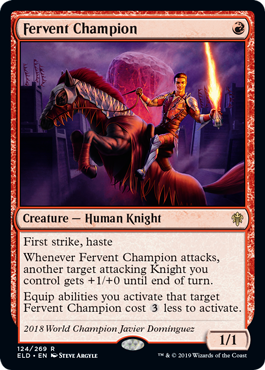
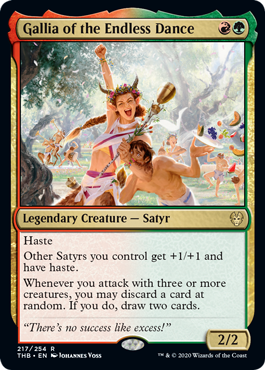
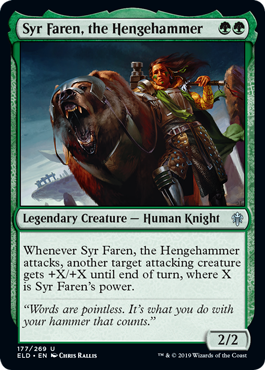
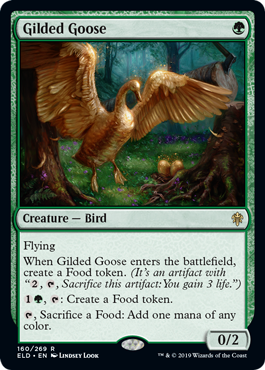
If you have played standard at all, chances are you’ve seen Fervent Champion get in for a lot of damage. He does a great job of getting in for early damage and becomes a strong threat when it becomes pumped up in any way. Gallia of the Endless Dance is similar to Fervent Champion in that it gets in for early damage, but instead of first strike it lets us get ahead on cards. While the randomness might be a bit off-putting, it is ultimately better to just see more cards and put cards in the graveyard. Syr Faren, the Hengehammer puts a surprising amount of pressure early on and if it gets pumped in any way it becomes significantly stronger as well. Finally, Gilded Goose is a one mana dork and because it comes out early, it is the best mana dork in the deck by a fair bit.
Closing out the Game
While Klothys does a great job at closing out the game, this is only one way we have of closing out the game, with the other being overwhelming the opponent and beating them down before they can respond. The main ways we do this is through Nylea, Keen-Eyed, Domri, Chaos Bringer, The Great Henge, Field of the Dead, Embercleave and God-Eternal Rhonas.
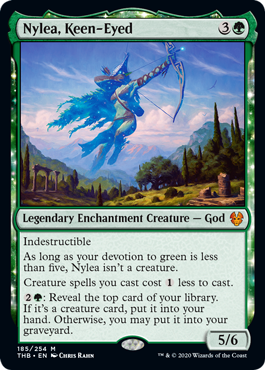
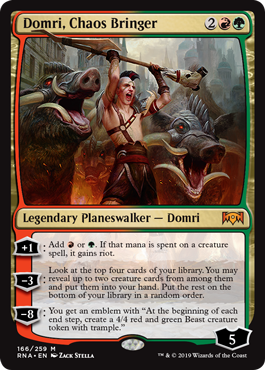
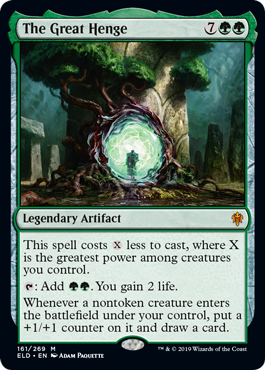

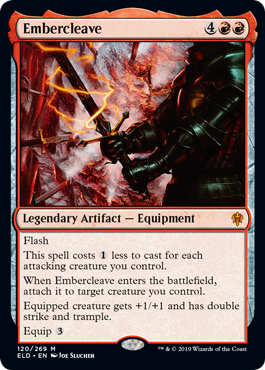
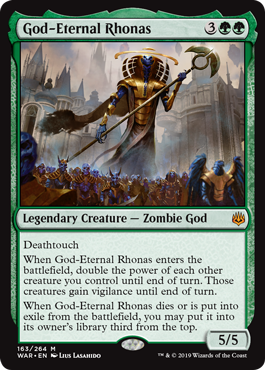
Nylea works incredibly well with Klothys, putting in undesirable cards into the graveyard, as well as being hard to remove and being a large body. Domri Chaos Bringer has a relevant uptick, with riot being able to kill someone out of the blue, while his downtick has a strong chance of hitting two creatures and if we whiff, it still makes sure we draw into action sooner. His ultimate is also very strong and wins the game by itself, but I have only been able to activate it once and it is much safer to just use him for value. The next piece of our value gameplan is The Great Henge, which turns our creatures into draw spells, in addition to making them larger. The final card we have to outvalue the opponent is Field of the Dead. Even though the deck is not based around it, the card is still absurdly strong and pretty much every deck that can run 7 different lands might as well just throw it into the list. The deck uses it well just because running a bunch of one-off lands for Elvish Reclaimer. As for our beat down plan, Embercleave is absurdly strong, being able to burst people for a ton of damage if the opponent did not plan around it. There have also been several occasions where I have hard cast it for six mana, turned Klothys into a creature, have her equip it for free, then go in for 10 trample. While this is not the most optimal way of playing it, the fact it is two pips you can flash out is a lot more relevant than one would expect. Finally, God-Eternal Rhonas is the closest we can get to an overrun effect, as providing vigilance to make combat a lot easier to go through.
Other Notable Cards
There are several other cards that I feel deserve a mention, yet was unable to fit them into a broader category. These cards are Rhythm of the Wild, Guardian Project, Cindervines, and to a lesser extent all the creatures that blow up Enchantments.
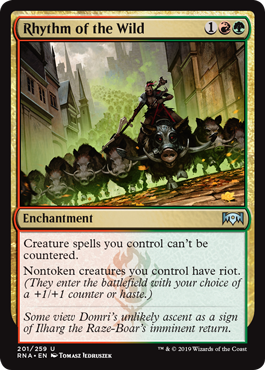
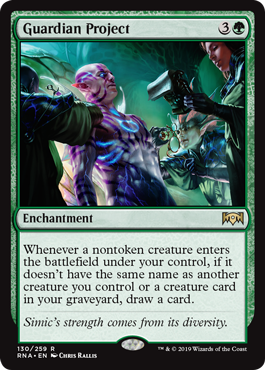
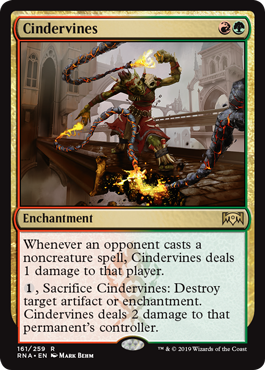
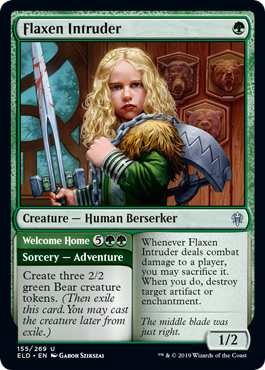
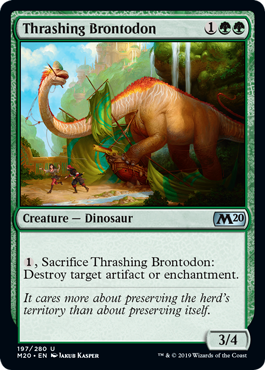
One of the most demoralizing cards to face down as a control deck is a Rhythm of the Wild as it makes interacting with creatures significantly harder, which is exactly why we run it. The card not only protects are creatures from counterspells but also forces the opponent to have instant speed interaction if they do not want to be hit by a ton. Guardian Project is essentially just a worse version of The Great Henge, which means that it is still a very strong card. While it is slow to come down, it is capable of keeping us in a game when we draw our early game cards in the mid to late game. Cindervines, serves two purposes, with the first one to hose control decks more by making every card they play hurt them. This tends to make it attract a lot of hate, burning lots of removals only to have it sacrifice to kill a permanent they own and shock them. The second purpose, which is possibly just as important, is the same reason why the creature enchantment removal is very strong. Theros Beyond Death brought back a lot of enchantment creatures into the game, and being able to pay 1 mana to blow them up at instant speed is a game-changer, allowing you to mess up your opponent’s turn and blockers, which is strong as well as being very fun.
Strengths and Weaknesses
I touched on this a bit in the Overview and the section talking about Klothys, but the main strengths of this deck are that it is fast and often closes out the game before the opponents are able to react much. Klothys puts on a deceptive amount of pressure, as well as hosing a large portion of cards from Theros Beyond Death, this being pretty much any card that has Escape. It is also oddly satisfying to watch the opponent scoop after stabilizing and pushing a lot of damage, just because Klothys would kill them faster.
Despite the strength of the deck, there are still times when it flounders extraordinarily. The three ways this happens is when the board gets wiped early through something like Defeaning Clarion or Storm’s Wrath, a more aggressive deck takes the board faster (especially when we keep a greedy hand), or when a control deck makes it to the late game and starts pulling ahead. In every game against a control deck that I lost, it was because they played Agent of Treachery stealing Klothys, turning my clock against me.
The Decklist
Here you can find the decklist that I used for this Brawl.
Wrap Up
Going to be honest, I was not expecting to enjoy Klothys as I have been. So much to the point where when I saw people wanting Klothys, I was concerned as I did not want to throw together a list and try to sell it to people, only to have it be a bad list. That being said, this did not happen and I had a blast playing this deck. If you like any form of beatdown deck, this would probably be my go-to deck for that.
Next week’s article is going to be about one of the following seven uncommon legendary creatures from Theros, Beyond Death. These include Eutropia, the Twice-Favored, Siona, Captain of the Pyleas, Daxos, Blessed by the Sun, Callaphe, Beloved by the Sea, Tyrmaret, Chosen from Death, Anax, Hardened in the Forge, and Renata, Called to the Hunt. The one uncommon legendary I did not include was Alirios, Enraptured because there is just not much that he does, which would lead to a boring deck and thus, boring article. Any of the other mentioned legendaries are fair game, so if you are interested in any of them, make sure to tell me in the comments and until next time, good luck brewing!
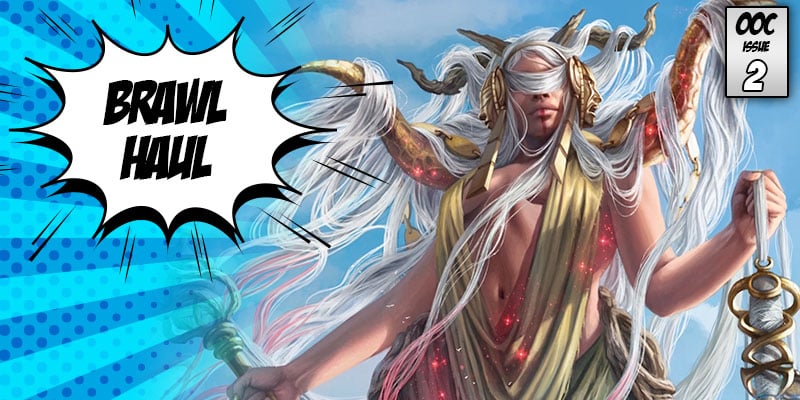
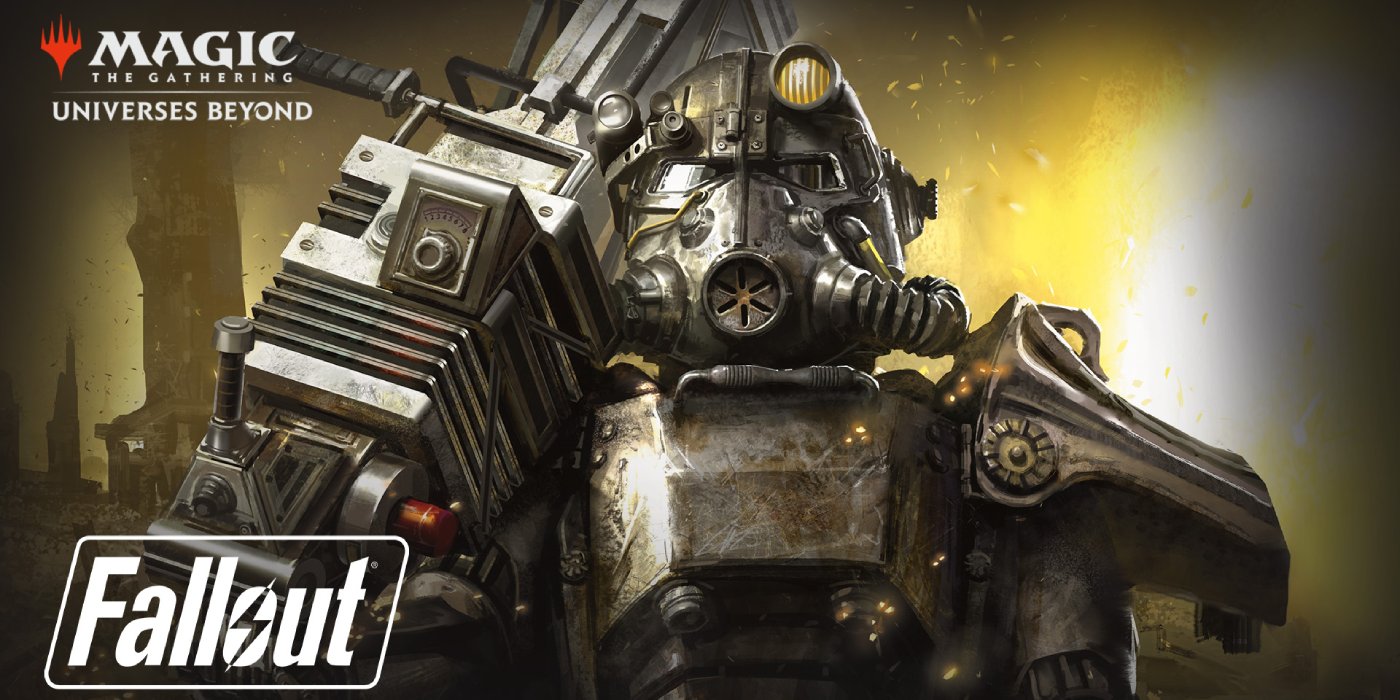
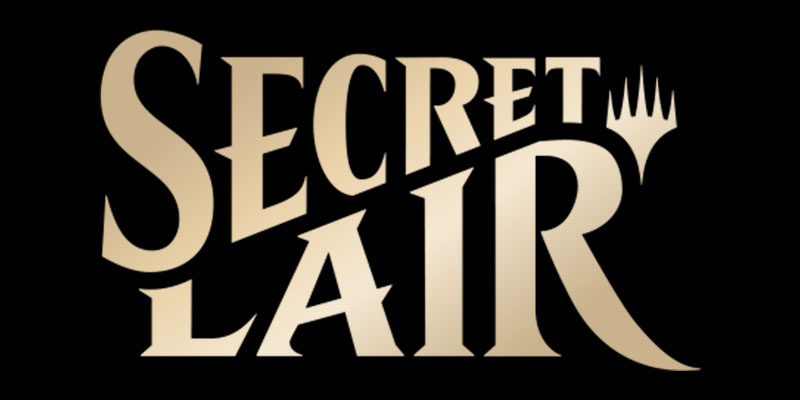
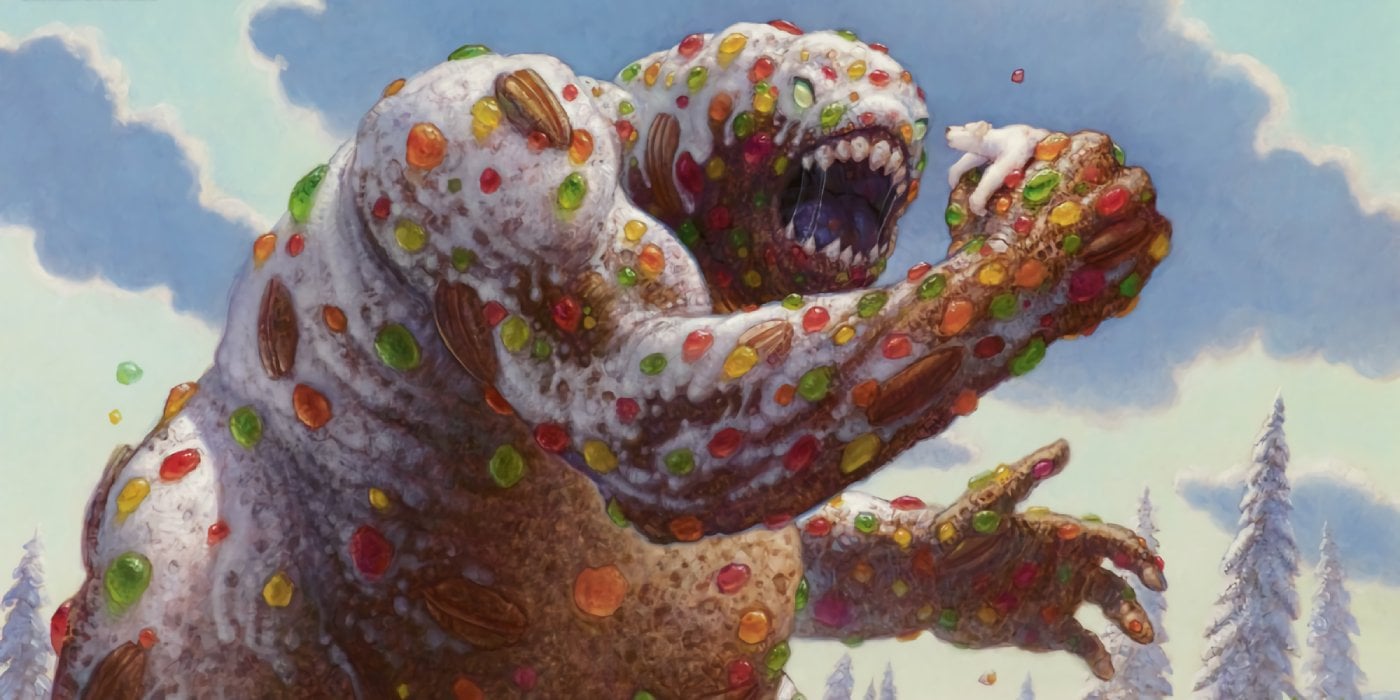
Comments
Great article! I will try this list out, it looks like a lot of fun!